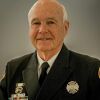One of the advantages of being from a family that is now in its fifth generation of firefighters is learning from the past and applying it to the present and future. Today as firefighters, we face a growing need to protect ourselves from assault, shootings, terrorism and violent protests that can either single us out as firefighters or indiscriminately injure us as part of our response to a variety of fire or EMS calls for assistance.
As I was growing up, I listened many times to both my great uncle, Fire Captain John Finnerty, and my uncle, Fire Lt. Frank Carville, talk about how the fire service weathered similar situations as far back as 90 years ago. My great uncle John joined the Cincinnati Fire Department in 1919 shortly after the end of World War I. By that time, the department had moved to be one of the first all-motorized fire departments in the United States, in part because it was also the home of the legendary Ahrens-Fox Fire Apparatus Company.
During the 1920s and 30s, but especially during the Depression, there were several organized gangs that regularly robbed banks throughout the Midwest. To combat these highly publicized crimes, the fire department was employed as part of the local response to these robberies.
While the police department had one-way radios that could broadcast an alert of a bank robbery to their motor patrols, they also used the fire department’s tele-type system to give more details about the crime and request fire personnel to alert the police officer on the beat. Fire stations in the vicinity of a major crime were also sent to predetermined locations to use their apparatus as road blocks. There they would meet up with the neighborhood police officer and together they would screen the cars traveling on the major roadways.
Responding fire task forces were armed
A runner would stay at the fire station and wait on further information that would come over the tele-type, and then relay that information to the fire and police personnel at the road block. When my great uncle John spoke of these incidents, it was surprising for me to learn that each piece of fire apparatus was also issued both a 12-gauge shotgun and a .38 caliber revolver in the event the fire unit encountered the criminals before the arrival of the police officer.
Uncle Frank, who joined the same department after World War II, indicated that these firearms remained on the fire apparatus well into the late 1960s. That period of our history saw violence and riots by anti-war protesters and civil unrest after the assassinations of both Presidential Candidate Bobby Kennedy, the brother of the late President John Kennedy, and Dr. Martin Luther King. Prior to them being retired from fire department use, I saw examples of both of these firearms that bore the distinct engraving of Cincinnati Fire Department. Now examples of these firearms are displayed in cases at the Cincinnati Fire Museum.
It was also during the widespread civil unrest of the 60s that the fire service started the Task Force concept. During that period, several major cities decided that no fire company would respond on its own to any dispatch, but instead formed units into task forces. A light task force usually consisted of an engine, ladder and a chief officer, while a heavy task force consisted of three engines, two ladders and a chief officer. All of the task forces traveled with either police or National Guard escorts. It was not unusual for rocks to be thrown from overpasses or shots fired at the responding apparatus.
Issuing tactical vests for firefighter protection
Fire tactics were also changed. In unstable areas, fires were fought with 2½-inch fire lines running directly from the closest fire hydrants, by-passing the pumps on the fire engines. Trucks were primarily used for quick transportation of personnel in and out of dangerous areas. Apparatus was placed in the best direction for their quick egress or on dead-end streets turned around to face outward toward the only escape route.
In the event of trouble, the fire lines were dropped and all personnel boarded the trucks and left. Many times the firefighters still had to run a gauntlet of rocks, stones or bullets. As a result of these types of incidents, fully enclosed fire truck cabs soon replaced the open or partially opened cabs of older fire apparatus.
Why does all this ancient history matter? Today, the fire service faces a growing series of physical attacks with assaults, stabbings, shootings, protests and potential terrorism aimed at causing injuries or deaths to our firefighters and paramedics. Fire departments since 9/11 have faced these new challenges that even my uncles would not have imagined when they served.
For the second time in my fire service career, my department is now purchasing tactical vests for our personnel. The first time was in a much more urban setting, but now it is also clear that these modern dangers aren’t limited just to an inner city. Along with these new tactical vests, comes a new Standard Operating Guideline that outlines the type of calls or perhaps even the specific locations where it will be mandatory for personnel to wear them.
A part of me understands why these tactical vests have become a necessity for firefighter safety, but with them is my hope that we won’t lose our steadfast principles of dedicated service and professionalism that have been the hallmark of the fire service for nearly 300 years.
The bottom line is we also must always be ready to face any of these potential dangers with the equipment needed to save lives of the innocent, including those of our own.
Stay safe!



